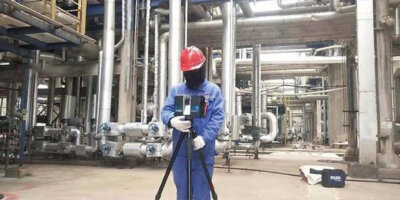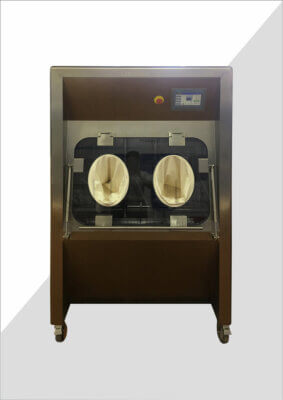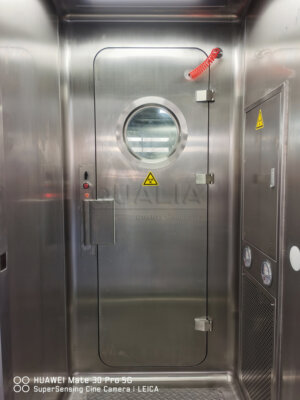In an era where environmental protection is paramount, effluent decontamination systems play a crucial role in safeguarding our ecosystems from harmful pollutants. These sophisticated systems are designed to treat and purify wastewater from various sources, ensuring that the discharged effluent meets stringent environmental standards. As industries and research facilities continue to expand, the need for effective effluent decontamination has never been more critical.
The process of effluent decontamination involves a series of complex steps, each tailored to address specific contaminants and pollutants. From biological treatment methods to advanced chemical processes, these systems employ cutting-edge technologies to neutralize harmful substances and render wastewater safe for release into the environment. The importance of these systems extends beyond mere regulatory compliance; they are essential for preserving water quality, protecting aquatic life, and maintaining public health.
As we delve deeper into the world of effluent decontamination, we'll explore the various types of systems available, their applications across different industries, and the latest advancements in decontamination technology. We'll also examine the crucial factors that influence system selection and design, as well as the challenges faced in implementing and maintaining these vital environmental safeguards.
Effluent decontamination systems are essential for protecting the environment and public health by treating wastewater to remove harmful contaminants before discharge.
| System Type | Primary Application | Key Features |
|---|---|---|
| Batch | Low volume, high-risk facilities | High temperature sterilization, flexible operation |
| Continuous Flow | High volume industrial facilities | Constant processing, energy-efficient |
| Chemical | Pharmaceutical and healthcare | Uses disinfectants, suitable for sensitive materials |
| Thermochemical | Research laboratories | Combines heat and chemical treatment |
| Biological | Municipal wastewater | Uses microorganisms, eco-friendly |
What are the fundamental principles of effluent decontamination?
Effluent decontamination is founded on the principle of removing or neutralizing harmful substances from wastewater before it's released into the environment. This process involves a combination of physical, chemical, and biological methods designed to target specific contaminants.
The fundamental principles include filtration to remove solid particles, chemical treatment to neutralize toxins, and biological processes to break down organic matter. Advanced systems may also incorporate UV radiation or membrane technology for further purification.
These principles are applied in various combinations depending on the nature of the effluent and the required level of decontamination. For instance, (QUALIA)'s Effluent Decontamination System (EDS) utilizes a comprehensive approach that ensures thorough treatment of liquid waste from BSL-2, 3, and 4 facilities.
Effective effluent decontamination relies on a multi-faceted approach, combining physical, chemical, and biological treatment methods to ensure comprehensive removal of contaminants.
| Treatment Method | Target Contaminants | Efficiency |
|---|---|---|
| Filtration | Suspended solids | 90-95% |
| Chemical | Dissolved toxins | 85-99% |
| Biological | Organic matter | 80-95% |
| UV Radiation | Microorganisms | 99.9% |
How do batch effluent decontamination systems operate?
Batch effluent decontamination systems are designed to treat discrete volumes of wastewater in a cyclical process. These systems are particularly well-suited for facilities with lower effluent volumes or those dealing with highly hazardous materials.
The operation of a batch system typically involves collecting wastewater in a holding tank until a predetermined volume is reached. Once full, the tank is sealed, and the decontamination process begins. This often includes heating the effluent to a high temperature for a specified duration to ensure sterilization.
After the treatment cycle is complete, the decontaminated effluent is cooled and tested for safety before being discharged. The (QUALIA) EDS for BSL-2, 3, and 4 liquid waste employs advanced batch processing techniques to ensure thorough decontamination of potentially hazardous effluents.
Batch effluent decontamination systems provide precise control over the treatment process, making them ideal for handling high-risk waste streams in research and healthcare facilities.
| Process Stage | Duration | Temperature |
|---|---|---|
| Filling | 30-60 min | Ambient |
| Heating | 60-90 min | Up to 135°C |
| Sterilization | 30-60 min | 121-135°C |
| Cooling | 60-90 min | To ambient |
What advantages do continuous flow systems offer for effluent treatment?
Continuous flow effluent decontamination systems provide a constant, uninterrupted treatment process, making them ideal for facilities with high volumes of wastewater. These systems offer several advantages over batch systems in certain applications.
One of the primary benefits is their ability to handle large quantities of effluent efficiently. This makes them particularly suitable for industrial facilities or large research centers that generate a steady stream of wastewater. Continuous flow systems also tend to be more energy-efficient, as they maintain a constant temperature rather than repeatedly heating and cooling batches.
Additionally, these systems often require less space and can be more easily integrated into existing infrastructure. While (QUALIA) specializes in batch systems for high-risk environments, continuous flow systems play a crucial role in many industrial applications where consistent, high-volume treatment is necessary.
Continuous flow effluent decontamination systems offer increased efficiency and capacity for high-volume wastewater treatment, making them an excellent choice for large-scale industrial applications.
| Feature | Advantage | Impact |
|---|---|---|
| Constant Operation | Reduced downtime | 24/7 processing |
| Energy Efficiency | Lower operating costs | 20-30% energy savings |
| Space Utilization | Compact design | 40% smaller footprint |
| Integration | Seamless workflow | Minimal disruption |
How do chemical decontamination methods complement thermal processes?
Chemical decontamination methods play a vital role in effluent treatment, often working in tandem with thermal processes to ensure comprehensive decontamination. These methods involve the use of disinfectants or oxidizing agents to neutralize or destroy pathogens and other harmful substances.
Chemical treatments are particularly effective against certain microorganisms that may be resistant to heat alone. They can also be used to break down complex organic compounds or to neutralize specific chemical contaminants. In many cases, a combination of chemical and thermal treatments provides the most thorough decontamination.
The (QUALIA) EDS incorporates advanced chemical treatment options alongside its thermal processes, allowing for customized decontamination protocols based on the specific needs of each facility and the nature of their effluent.
The synergy between chemical and thermal decontamination methods enhances the overall effectiveness of effluent treatment, ensuring a broader spectrum of contaminant removal.
| Chemical Agent | Target Contaminants | Effectiveness |
|---|---|---|
| Chlorine | Bacteria, viruses | 99.9% |
| Hydrogen Peroxide | Organic compounds | 95-99% |
| Ozone | Microorganisms, odors | 99.99% |
| Peracetic Acid | Spores, bacteria | 99.9999% |
What role does automation play in modern effluent decontamination systems?
Automation has revolutionized the field of effluent decontamination, bringing unprecedented levels of precision, efficiency, and safety to the process. Modern systems, including those offered by (QUALIA), incorporate advanced automation technologies to streamline operations and ensure consistent results.
Automated systems can precisely control treatment parameters such as temperature, pressure, and chemical dosing, minimizing the risk of human error. They also enable real-time monitoring and data logging, providing operators with valuable insights into system performance and treatment efficacy.
Furthermore, automation enhances safety by reducing the need for direct human interaction with potentially hazardous materials. It also allows for remote operation and monitoring, which is particularly beneficial in high-risk environments such as BSL-3 and BSL-4 facilities.
Automation in effluent decontamination systems leads to improved accuracy, increased safety, and enhanced operational efficiency, ultimately resulting in more reliable and effective treatment processes.
| Automated Feature | Benefit | Improvement |
|---|---|---|
| Parameter Control | Precise treatment | ±0.1°C accuracy |
| Real-time Monitoring | Rapid response | 24/7 oversight |
| Data Logging | Compliance tracking | 100% record keeping |
| Remote Operation | Enhanced safety | 90% reduced exposure |
How are effluent decontamination systems validated for effectiveness?
Validation of effluent decontamination systems is a critical process that ensures the equipment is performing as intended and meeting all regulatory requirements. This involves a series of tests and protocols designed to verify the system's ability to effectively neutralize or remove contaminants.
Validation typically includes physical, chemical, and biological testing of the treated effluent. This may involve the use of biological indicators to confirm the destruction of specific microorganisms, chemical analysis to verify the removal of targeted contaminants, and physical tests to ensure proper system operation.
(QUALIA)'s EDS undergoes rigorous validation processes, including challenge testing with surrogate organisms and comprehensive documentation of all treatment parameters. This ensures that the system consistently meets or exceeds the stringent standards required for BSL-2, 3, and 4 facilities.
Thorough validation of effluent decontamination systems is essential for ensuring public safety and environmental protection, as well as maintaining compliance with regulatory standards.
| Validation Method | Purpose | Frequency |
|---|---|---|
| Biological Indicators | Verify sterilization | Quarterly |
| Chemical Analysis | Confirm contaminant removal | Monthly |
| Physical Tests | Check system integrity | Weekly |
| Documentation Review | Ensure compliance | Ongoing |
What future developments can we expect in effluent decontamination technology?
The field of effluent decontamination is continually evolving, driven by advancements in technology and increasing environmental awareness. Future developments are likely to focus on improving efficiency, reducing energy consumption, and expanding the range of treatable contaminants.
One area of particular interest is the development of more sustainable treatment methods, such as advanced biological processes that can break down complex pollutants without the need for harsh chemicals. Another promising direction is the integration of artificial intelligence and machine learning to optimize treatment processes in real-time.
We can also expect to see advancements in membrane technology, potentially leading to more efficient filtration and separation processes. Companies like (QUALIA) are at the forefront of these innovations, continuously refining their systems to meet the evolving needs of the industry.
The future of effluent decontamination lies in more sustainable, intelligent, and adaptable systems that can effectively address emerging contaminants while minimizing environmental impact.
| Emerging Technology | Potential Impact | Timeline |
|---|---|---|
| AI-driven Optimization | 30% efficiency increase | 2-5 years |
| Advanced Membranes | 50% improved filtration | 3-7 years |
| Sustainable Biologicals | 80% chemical reduction | 5-10 years |
| Nanotech Treatments | 99.999% contaminant removal | 7-15 years |
In conclusion, effluent decontamination systems play a vital role in protecting our environment and public health. From batch systems designed for high-risk facilities to continuous flow systems for industrial applications, these technologies are essential for ensuring that wastewater is safely treated before being released into the environment. The integration of chemical and thermal processes, coupled with advanced automation and rigorous validation protocols, has significantly enhanced the effectiveness and reliability of these systems.
As we look to the future, the field of effluent decontamination is poised for further innovation, with a focus on sustainability, efficiency, and adaptability. Companies like (QUALIA) are leading the way in developing cutting-edge solutions that meet the evolving needs of various industries while adhering to stringent environmental standards.
The importance of proper effluent decontamination cannot be overstated. As our understanding of environmental impacts grows and regulations become more stringent, the role of these systems will only become more critical. By continuing to invest in research and development, and by implementing the most effective decontamination technologies available, we can ensure that our water resources remain clean and safe for generations to come.
External Resources
Effluent Decontamination systems – Belgian Biosafety Server – This resource provides a detailed description of effluent decontamination systems, including batch and continuous systems, their design, operation, and the parameters for effective decontamination.
ThermoDecoN™ | Low Pressure Batch Effluent Decontamination – This link describes the ThermoDecoN™ system, a low-pressure batch effluent decontamination system designed for small facilities with limited resources, emphasizing its simplicity, maintenance, and validation features.
EDS – Effluent Decontamination Systems – Burt Process Equipment – This page outlines various types of effluent decontamination systems, including high-temperature continuous batch, thermochemical continuous batch, and chemical continuous batch systems, highlighting their applications and features.
Effluent decontamination system – Wikipedia – This Wikipedia article provides a comprehensive overview of effluent decontamination systems, including their types (batch and continuous flow), methods of sterilization (heat and chemical), and applications in different facilities.
Effluent Decontamination Systems | Biowaste Sterilization | PRI BIO – This resource from PRI Bio discusses the various types of effluent decontamination systems, factors to consider when selecting a system (such as waste characteristics and bio-safety levels), and the importance of proper sizing and treatment levels.
Related Contents:
- Decontamination Systems: Safeguarding Health and Environment
- Water Decontamination: Essential Methods for Clean, Safe Water
- Decontamination Cleaning: Ensuring Safety Through Thorough Sanitization
- Application of Biological Treatment Methods for Different Types of Wastewaters
- How Biological Wastewater Treatment Systems Work: A Detailed Overview
- Effluent Decontamination Systems (EDS) by QUALIA: Protecting Public Health and the Environment
- Biological Wastewater Treatment System: The Ultimate Solution for High-Infectious Waste
- Comprehensive Guide to Biological Wastewater Treatment Systems
- How to Treat Laboratory Biological Wastewater Using Qualia’s Biological Wastewater Treatment System?





























